Daqing Zhang
Sensing in Bi-Static ISAC Systems with Clock Asynchronism: A Signal Processing Perspective
Feb 14, 2024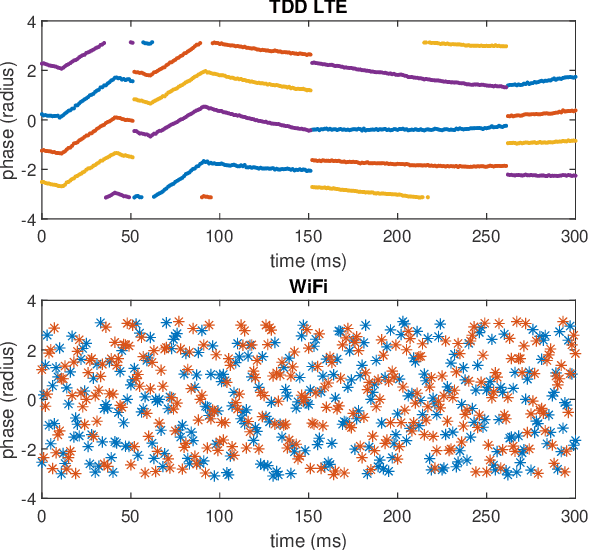
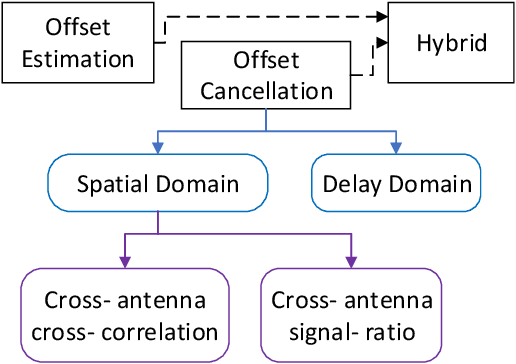
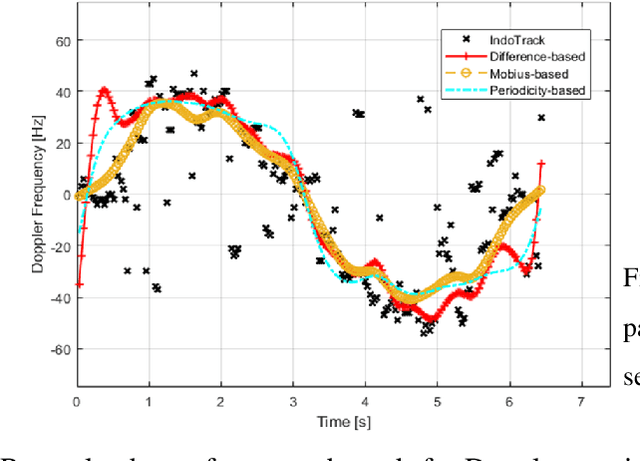

Abstract:Integrated Sensing and Communications (ISAC) has been identified as a pillar usage scenario for the impending 6G era. Bi-static sensing, a major type of sensing in \ac{isac}, is promising to expedite ISAC in the near future, as it requires minimal changes to the existing network infrastructure. However, a critical challenge for bi-static sensing is clock asynchronism due to the use of different clocks at far separated transmitter and receiver. This causes the received signal to be affected by time-varying random phase offsets, severely degrading, or even failing, direct sensing. Considerable research attention has been directed toward addressing the clock asynchronism issue in bi-static sensing. In this white paper, we endeavor to fill the gap by providing an overview of the issue and existing techniques developed in an ISAC background. Based on the review and comparison, we also draw insights into the future research directions and open problems, aiming to nurture the maturation of bi-static sensing in ISAC.
Natural Language based Context Modeling and Reasoning with LLMs: A Tutorial
Sep 24, 2023Abstract:Large language models (LLMs) have become phenomenally surging, since 2018--two decades after introducing context-awareness into computing systems. Through taking into account the situations of ubiquitous devices, users and the societies, context-aware computing has enabled a wide spectrum of innovative applications, such as assisted living, location-based social network services and so on. To recognize contexts and make decisions for actions accordingly, various artificial intelligence technologies, such as Ontology and OWL, have been adopted as representations for context modeling and reasoning. Recently, with the rise of LLMs and their improved natural language understanding and reasoning capabilities, it has become feasible to model contexts using natural language and perform context reasoning by interacting with LLMs such as ChatGPT and GPT-4. In this tutorial, we demonstrate the use of texts, prompts, and autonomous agents (AutoAgents) that enable LLMs to perform context modeling and reasoning without requiring fine-tuning of the model. We organize and introduce works in the related field, and name this computing paradigm as the LLM-driven Context-aware Computing (LCaC). In the LCaC paradigm, users' requests, sensors reading data, and the command to actuators are supposed to be represented as texts. Given the text of users' request and sensor data, the AutoAgent models the context by prompting and sends to the LLM for context reasoning. LLM generates a plan of actions and responds to the AutoAgent, which later follows the action plan to foster context-awareness. To prove the concepts, we use two showcases--(1) operating a mobile z-arm in an apartment for assisted living, and (2) planning a trip and scheduling the itinerary in a context-aware and personalized manner.
Integration of Radar Sensing into Communications with Asynchronous Transceivers
Mar 30, 2022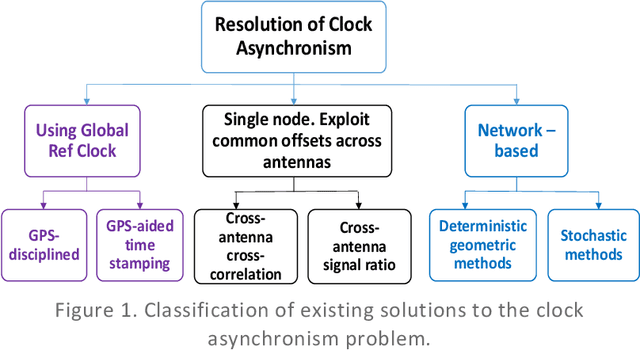
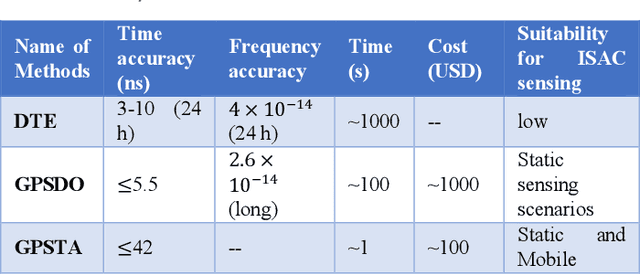
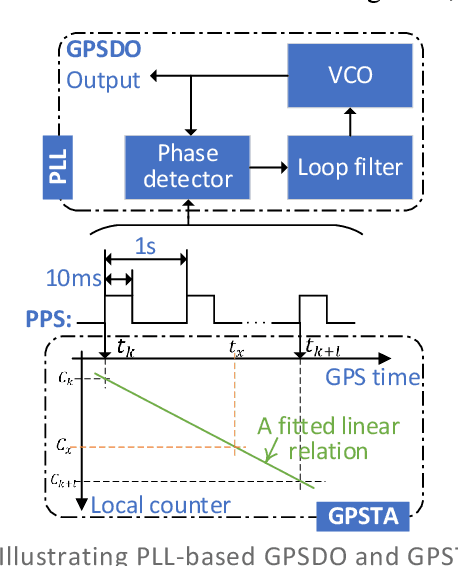
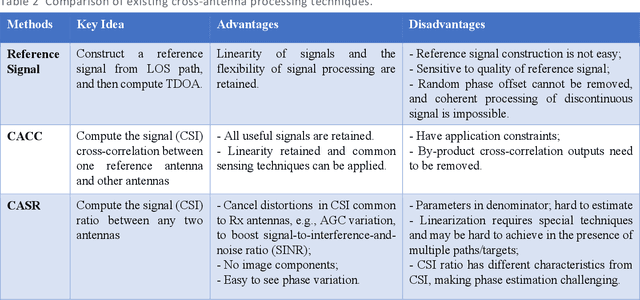
Abstract:Clock asynchronism is a central problem in integrating radar sensing into communication networks. It can cause ranging ambiguity and prevent coherent processing of dis-continuous measurements in integration with asynchronous transceivers. Should it be resolved, sensing can be efficiently realized in communication networks, requiring little network infrastructure and hardware changes. This article provides a systematic overview of existing and potential new techniques for tackling this critical problem. We first review existing solutions, including using a fine-tuned global reference clock, and single-node-based and network-based techniques. We then examine open problems and research opportunities, offering insights into what may be better realized in each of the three solutions areas.
Practical Issues and Challenges in CSI-based Integrated Sensing and Communication
Mar 18, 2022Abstract:Next-generation mobile communication network (i.e., 6G) has been envisioned to go beyond classical communication functionality and provide integrated sensing and communication (ISAC) capability to enable more emerging applications, such as smart cities, connected vehicles, AIoT and health care/elder care. Among all the ISAC proposals, the most practical and promising approach is to empower existing wireless network (e.g., WiFi, 4G/5G) with the augmented ability to sense the surrounding human and environment, and evolve wireless communication networks into intelligent communication and sensing network (e.g., 6G). In this paper, based on our experience on CSI-based wireless sensing with WiFi/4G/5G signals, we intend to identify ten major practical and theoretical problems that hinder real deployment of ISAC applications, and provide possible solutions to those critical challenges. Hopefully, this work will inspire further research to evolve existing WiFi/4G/5G networks into next-generation intelligent wireless network (i.e., 6G).
From Personalized Medicine to Population Health: A Survey of mHealth Sensing Techniques
Jul 02, 2021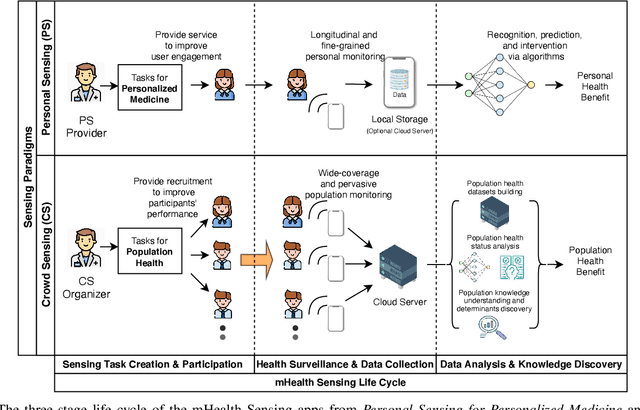
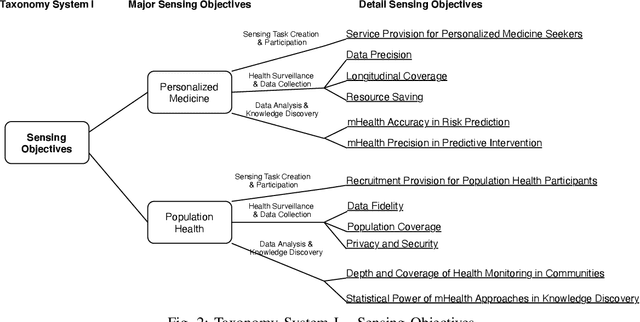
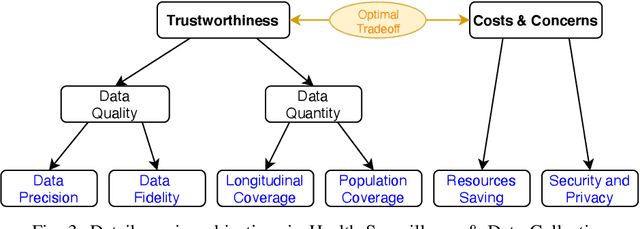
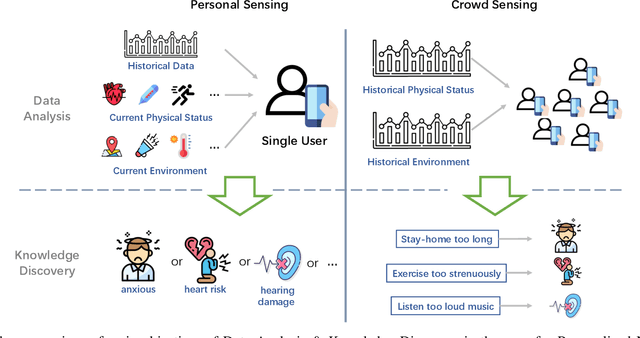
Abstract:Mobile Sensing Apps have been widely used as a practical approach to collect behavioral and health-related information from individuals and provide timely intervention to promote health and well-beings, such as mental health and chronic cares. As the objectives of mobile sensing could be either \emph{(a) personalized medicine for individuals} or \emph{(b) public health for populations}, in this work we review the design of these mobile sensing apps, and propose to categorize the design of these apps/systems in two paradigms -- \emph{(i) Personal Sensing} and \emph{(ii) Crowd Sensing} paradigms. While both sensing paradigms might incorporate with common ubiquitous sensing technologies, such as wearable sensors, mobility monitoring, mobile data offloading, and/or cloud-based data analytics to collect and process sensing data from individuals, we present a novel taxonomy system with two major components that can specify and classify apps/systems from aspects of the life-cycle of mHealth Sensing: \emph{(1) Sensing Task Creation \& Participation}, \emph{(2) Health Surveillance \& Data Collection}, and \emph{(3) Data Analysis \& Knowledge Discovery}. With respect to different goals of the two paradigms, this work systematically reviews this field, and summarizes the design of typical apps/systems in the view of the configurations and interactions between these two components. In addition to summarization, the proposed taxonomy system also helps figure out the potential directions of mobile sensing for health from both personalized medicines and population health perspectives.
Inverse Reinforcement Learning with Multiple Ranked Experts
Jul 31, 2019



Abstract:We consider the problem of learning to behave optimally in a Markov Decision Process when a reward function is not specified, but instead we have access to a set of demonstrators of varying performance. We assume the demonstrators are classified into one of k ranks, and use ideas from ordinal regression to find a reward function that maximizes the margin between the different ranks. This approach is based on the idea that agents should not only learn how to behave from experts, but also how not to behave from non-experts. We show there are MDPs where important differences in the reward function would be hidden from existing algorithms by the behaviour of the expert. Our method is particularly useful for problems where we have access to a large set of agent behaviours with varying degrees of expertise (such as through GPS or cellphones). We highlight the differences between our approach and existing methods using a simple grid domain and demonstrate its efficacy on determining passenger-finding strategies for taxi drivers, using a large dataset of GPS trajectories.
CrowdExpress: A Probabilistic Framework for On-Time Crowdsourced Package Deliveries
Sep 08, 2018
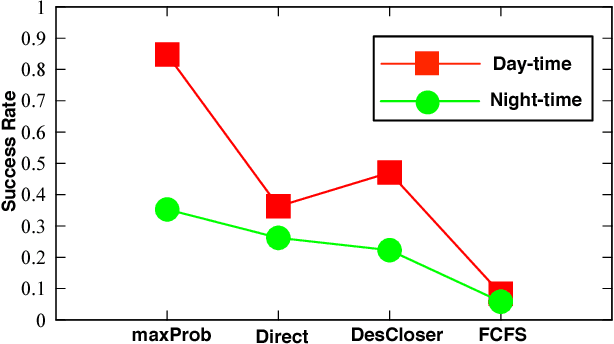
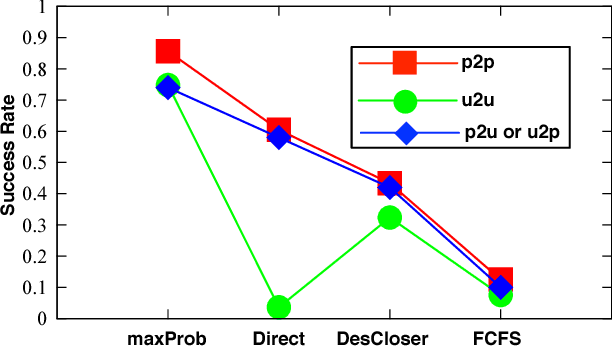
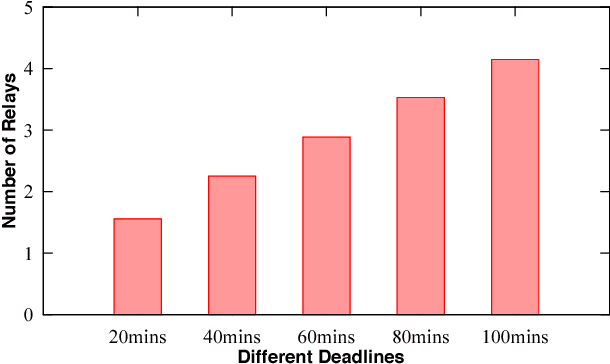
Abstract:Speed and cost of logistics are two major concerns to on-line shoppers, but they generally conflict with each other in nature. To alleviate the contradiction, we propose to exploit existing taxis that are transporting passengers on the street to relay packages collaboratively, which can simultaneously lower the cost and accelerate the speed. Specifically, we propose a probabilistic framework containing two phases called CrowdExpress for the on-time package express deliveries. In the first phase, we mine the historical taxi GPS trajectory data offline to build the package transport network. In the second phase, we develop an online adaptive taxi scheduling algorithm to find the path with the maximum arriving-on-time probability "on-the-fly" upon real- time requests, and direct the package routing accordingly. Finally, we evaluate the system using the real-world taxi data generated by over 19,000 taxis in a month in the city of New York, US. Results show that around 9,500 packages can be delivered successfully on time per day with the success rate over 94%, moreover, the average computation time is within 25 milliseconds.
Cell Selection with Deep Reinforcement Learning in Sparse Mobile Crowdsensing
May 24, 2018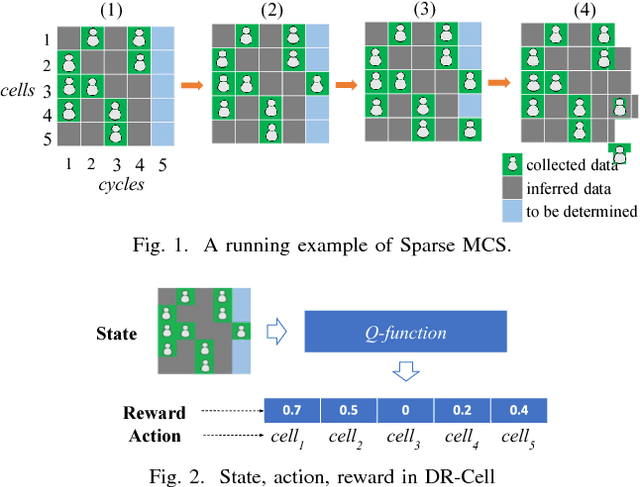
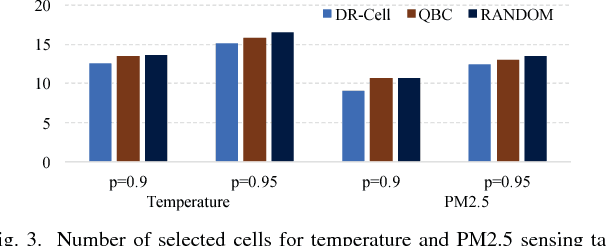
Abstract:Sparse Mobile CrowdSensing (MCS) is a novel MCS paradigm where data inference is incorporated into the MCS process for reducing sensing costs while its quality is guaranteed. Since the sensed data from different cells (sub-areas) of the target sensing area will probably lead to diverse levels of inference data quality, cell selection (i.e., choose which cells of the target area to collect sensed data from participants) is a critical issue that will impact the total amount of data that requires to be collected (i.e., data collection costs) for ensuring a certain level of quality. To address this issue, this paper proposes a Deep Reinforcement learning based Cell selection mechanism for Sparse MCS, called DR-Cell. First, we properly model the key concepts in reinforcement learning including state, action, and reward, and then propose to use a deep recurrent Q-network for learning the Q-function that can help decide which cell is a better choice under a certain state during cell selection. Furthermore, we leverage the transfer learning techniques to reduce the amount of data required for training the Q-function if there are multiple correlated MCS tasks that need to be conducted in the same target area. Experiments on various real-life sensing datasets verify the effectiveness of DR-Cell over the state-of-the-art cell selection mechanisms in Sparse MCS by reducing up to 15% of sensed cells with the same data inference quality guarantee.
Ridesourcing Car Detection by Transfer Learning
May 23, 2017
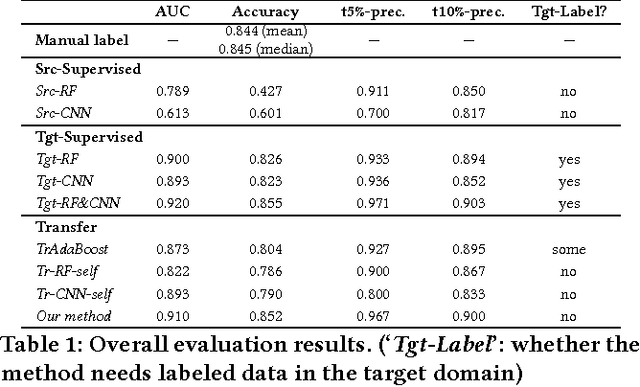
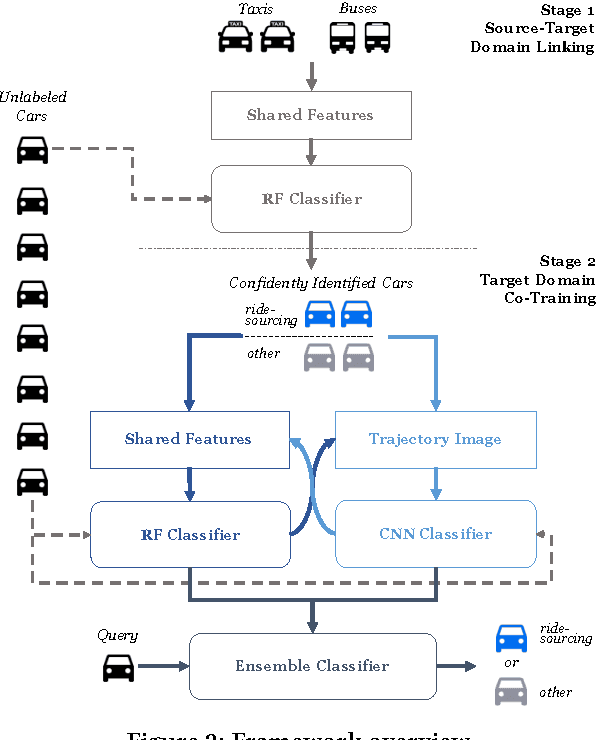
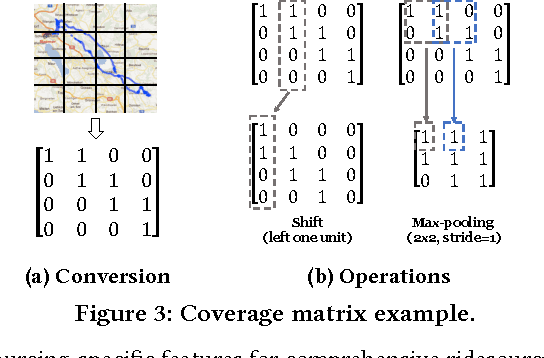
Abstract:Ridesourcing platforms like Uber and Didi are getting more and more popular around the world. However, unauthorized ridesourcing activities taking advantages of the sharing economy can greatly impair the healthy development of this emerging industry. As the first step to regulate on-demand ride services and eliminate black market, we design a method to detect ridesourcing cars from a pool of cars based on their trajectories. Since licensed ridesourcing car traces are not openly available and may be completely missing in some cities due to legal issues, we turn to transferring knowledge from public transport open data, i.e, taxis and buses, to ridesourcing detection among ordinary vehicles. We propose a two-stage transfer learning framework. In Stage 1, we take taxi and bus data as input to learn a random forest (RF) classifier using trajectory features shared by taxis/buses and ridesourcing/other cars. Then, we use the RF to label all the candidate cars. In Stage 2, leveraging the subset of high confident labels from the previous stage as input, we further learn a convolutional neural network (CNN) classifier for ridesourcing detection, and iteratively refine RF and CNN, as well as the feature set, via a co-training process. Finally, we use the resulting ensemble of RF and CNN to identify the ridesourcing cars in the candidate pool. Experiments on real car, taxi and bus traces show that our transfer learning framework, with no need of a pre-labeled ridesourcing dataset, can achieve similar accuracy as the supervised learning methods.
 Add to Chrome
Add to Chrome Add to Firefox
Add to Firefox Add to Edge
Add to Edge